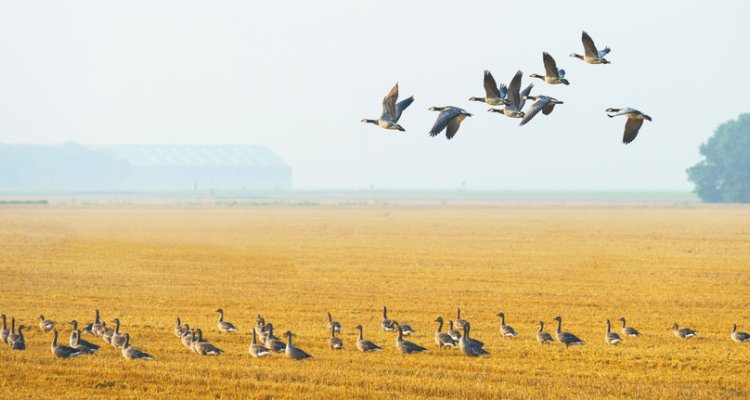
News
WUR model predicts animal disease introductions via wildlife
Animal diseases can enter countries or regions through the movements of infected wildlife. Researchers of Wageningen Bioveterinary Research (WBVR, part of Wageningen University & Research) designed a risk assessment model to quantify the risk of disease entry via wildlife for different diseases and wildlife species. “Our model can support policy-makers to make informed decisions”, says WBVR researcher Michel Counotte.
Emerging and re-emerging animal diseases that affect livestock can be introduced into a country or region through movement of live animals, products, and people. Many of these diseases can also occur in wildlife populations, therefore the movement of wildlife can act as a possible entry route. Introductions of highly pathogenic avian influenza (HPAI) into the Netherlands for example were mainly attributed to migrating wild birds. Similarly, for the entry of African swine fever (ASF) into European countries, wild boar play an important role. WBVR researchers designed a generic risk assessment model for the risk of animal disease entry through wildlife. The development of the risk model was funded by the Dutch ministry of Agriculture, Nature and Food Quality. The model was illustrated using the risk of entry of African swine fever through wild boar and highly pathogenic avian influenza through wild birds for the Netherlands based on data collected between 2014 and 2021.
Model
“We found that the entry risk, or the probability that an infection reaches the border, of HPAI fluctuated between the years, with a peak in 2021. In that year, we estimated the number of infected birds to reach the Dutch border by wild bird migration at 273, with a 95% uncertainty interval ranging from 254 to 290”, explains WBVR-researcher Michel Counotte. The probability that ASF outbreaks reached the Dutch border through wild boar movement was very low throughout the whole period.
“On an annual scale, the predicted entry risk for HPAI correlated well with the number of observed outbreaks, which means the model we present offers a generic and flexible framework to assess the entry risk of disease through wildlife.” The model allows rapid and transparent estimation of the entry risk for multiple diseases and wildlife species. As wildlife movement is often complex and based on many external factors that vary between regions and time, such as availability of feed, variation in temperature, and climate change, the risk model should be flexible. “The modular structure of the model allows for adding nuance and complexity when required or when more data becomes available”, according to Counotte.
Risk assessment
Assessing the entry risk helps to prioritize and plan preventive measures to mitigate the entry risk of emerging animal diseases and surveillance activities for early detection. Generic risk assessment tools allow for the rapid and transparent comparison of the risk across multiple diseases. “In contrast to existing models, a generic risk model allows to quantify the entry risk via wildlife movements for different diseases and wildlife species, despite the vast variety in both.”
Counotte emphasises that the interpretation of the results of the model should be semi-quantitatively. “The model provides an indication of the relative entry risk over different years rather than a prediction of the absolute number of entries. We should also put the results in perspective given the limitations of the data used. We departed from observed outbreaks of disease, where heterogeneous underreporting and changes in what is reported in time and space is likely”, the researcher explains.
Entry risks
To assess the entry risk of diseases transmitted by wildlife, the researchers described animal movement patterns using a limited number of variables. Each set of parameterized variables represents a ‘behaviour’ group. “With this approach, we were able to build a generic and flexible framework to assess the entry risk of diseases by wildlife that could be used for both terrestrial animals, illustrated by ASF, and birds, illustrated by HPAI.” The model thus enables rapid and transparent estimation of the entry risk for a variety of diseases and wildlife species.